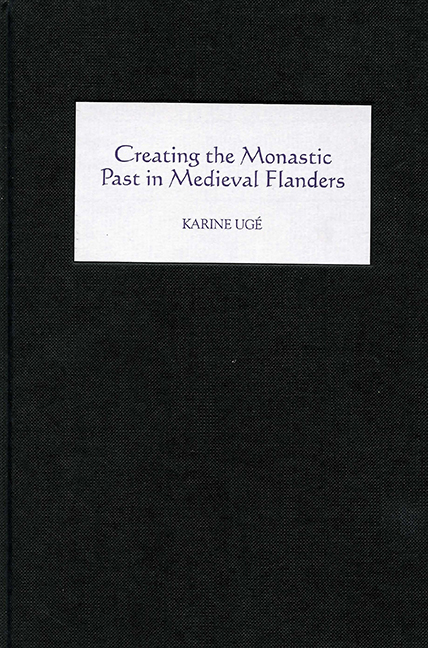Part II - The Hagiographic Cycle of St Rictrude
Published online by Cambridge University Press: 12 September 2017
Summary
WITH THE STUDY of Saint-Bertin we have seen how one monastic community selectively preserved, used and altered its archives and historiographic narratives and created new ones so as to make its past useful for present needs. Moreover, from Folcuin's Gesta to Simon's Gesta, it is clear that the community almost continuously – save for the sixty-year gap between the two gesta – kept archives and produced new narratives based on local historiographic tradition. In this process, the foundation story of Sithiu stands out as the main period of the community's past that was most frequently used and transformed. Because of the abundance of sources produced at Saint-Bertin, and because their main rivals, the canons of Saint-Omer, preserved the original foundation story, it is possible to reconstruct how and why the monks adjusted their past by means of these new narratives and forged charters.
In a number of ways, the case of the abbey of Marchiennes is radically different from that of Saint-Bertin. In comparison with the renowned and wealthy Saint-Bertin, Marchiennes was amodest community, struggling in the shadowof its powerful neighbor, Saint-Amand. Unlike Saint-Bertin, there is no sign of Marchiennes’ archives until the eleventh century. Indeed, by the early tenth century, because of neglect or destruction, Marchiennes’ archives had disappeared and the cults and legends of the community's saints had fallen into oblivion. Despite the lack of written evidence, Hucbald of Saint-Amand, who wrote the life of Marchiennes’ patron saint, Rictrude, at the beginning of the tenth century, was able, thanks to oral tradition and a good deal of ‘imaginative memory’, to piece together a remarkably detailed foundation story of Marchiennes. This seminal text of Marchiennes’ historiography cannot be compared to other contemporary sources; therefore, the circumstances and the purpose of its redaction can only be inferred from the text itself. The Vita Rictrudis not only fulfilled the community's basic needs for a liturgical text upon which the cult of its saints could be based, but it also emphasized the community's secular and spiritual prestige by associating the saint and her family with a number of prestigious lay and religious people of her time.
- Type
- Chapter
- Information
- Creating the Monastic Past in Medieval Flanders , pp. 95 - 96Publisher: Boydell & BrewerPrint publication year: 2005

